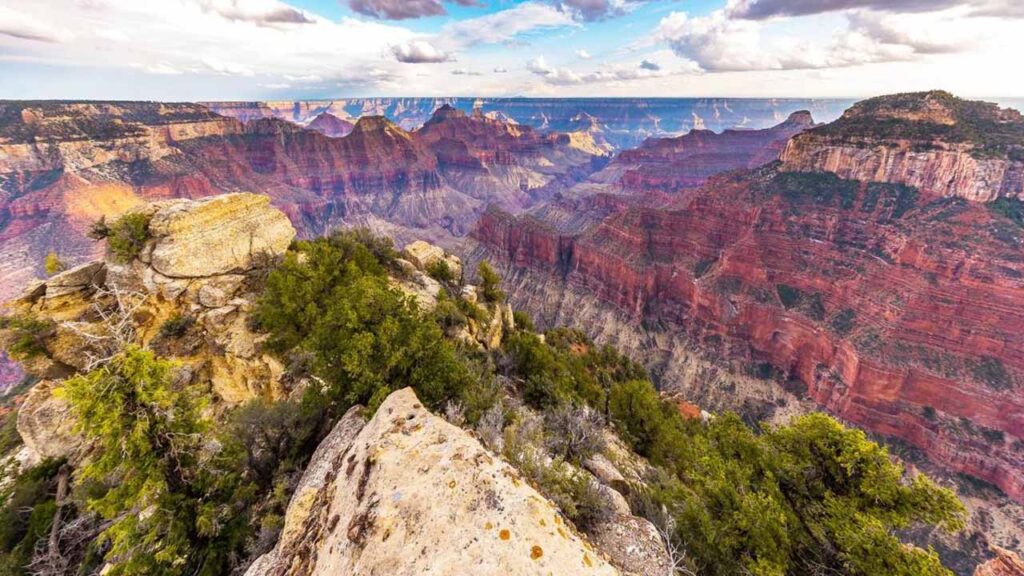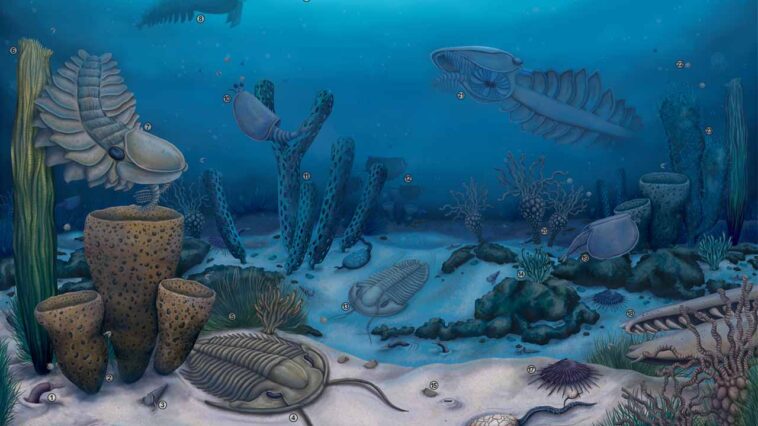Scientists have made a groundbreaking discovery in Arizona’s Grand Canyon, uncovering fossils dating back approximately 500 million years to the Cambrian Period — a time marked by an explosive increase in biological diversity. This find sheds new light on the extraordinary “experiments” of evolution, revealing ancient life forms and feeding strategies that broaden our understanding of early animal evolution.
Unveiling the Cambrian Explosion Through Fossils
Led by a team from Cambridge University, researchers excavated over 1,500 tiny carbonaceous fossils from the Bright Angel Formation (BAF) along the Colorado River. The majority of these fossils belong to priapulid worms — soft-bodied marine creatures — alongside several hundred shelled organisms and some mollusks.
During a 2023 field expedition, Giovanni Mussini and his team collected fist-sized rock samples which they dissolved using hydrofluoric acid to isolate thousands of microscopic fossils. These minute remains represent some of the most sophisticated early feeding mechanisms known from the Cambrian era, a pivotal chapter in the history of life on Earth.

Complex Feeding Strategies of Cambrian Creatures
Microscopic examination revealed that many shelled animals possessed intricate grinding teeth and rows of bristle-like structures arranged in triangular grooves around their mouths. These tiny organisms employed their hairy appendages much like conveyor belts to sweep food particles toward their specialized teeth for grinding and processing.
One of the most astonishing discoveries is a newly identified species named Kraytdraco spectatus, inspired by the krayt dragon from the Star Wars saga. This species featured hundreds of complex branched teeth extending from a protruding mouth, which functioned as filters to trap and process food particles. The varying shape and length of teeth across different body regions indicate a highly specialized feeding adaptation.
Surprising New Species Among Fossils

Mollusk-like soft-bodied creatures found at the site exhibited dental chains resembling those of modern garden snails, likely used to scrape algae or bacteria from rocks. The shelled organisms demonstrated suspension feeding, utilizing tiny cilia near their mouths to draw in and capture suspended food.
Professor Carol Dehler of Utah State University emphasized the significance of the site: “The Tonto Group in the Grand Canyon is a unique treasure trove of sedimentary layers and fossils documenting the Cambrian Explosion some 500 million years ago.”
A Balanced Ecosystem for Evolutionary Innovation
The research team determined that during the Cambrian period, the fossil-rich site was a shallow marine environment — neither too deep nor too shallow — which served as an ideal “sweet spot” for evolutionary experimentation. This environment allowed ancient sea creatures to develop novel feeding strategies and adapt to diverse ecological niches.
The fossils represent rare specimens from the latter half of the Cambrian, illustrating a wide variety of feeding adaptations. These findings enrich our understanding of the origins of modern animal groups and illuminate the evolutionary processes that shaped life half a billion years ago.

Publication and Future Research
The detailed research was published in Science Advances, marking a significant contribution to paleontology and evolutionary biology. As scientists continue to analyze these fossils, further insights into Cambrian ecosystems and the evolutionary “trial and error” processes that gave rise to today’s biodiversity are expected.

